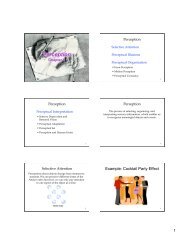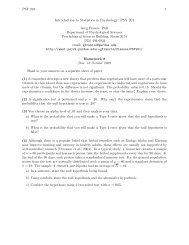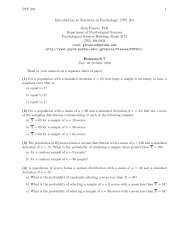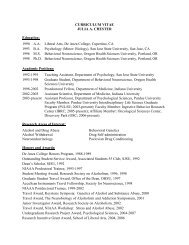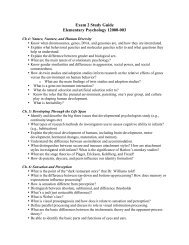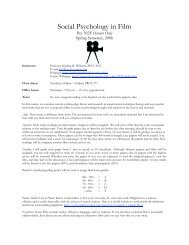Learning - Department of Psychological Sciences
Learning - Department of Psychological Sciences
Learning - Department of Psychological Sciences
Create successful ePaper yourself
Turn your PDF publications into a flip-book with our unique Google optimized e-Paper software.
Classical ConditioningIdeas <strong>of</strong> classical conditioning originate from oldphilosophical theories. However, it was theRussian physiologist Ivan Pavlov who elucidatedclassical conditioning. His work provided a basisfor later behaviorists like John Watson and B. F.Skinner.Pavlov’s ExperimentsBefore conditioning, food (UnconditionedStimulus, US) produces salivation(Unconditioned Response, UR). However, thetone (neutral stimulus) does not.SovfotoIvan Pavlov (1849-1936)1314Pavlov’s ExperimentsDuring conditioning, the neutral stimulus (tone)and the US (food) are paired, resulting insalivation (UR). After conditioning, the neutralstimulus (now Conditioned Stimulus, CS) elicitssalivation (now Conditioned Response, CR)AcquisitionAcquisition is the initial stage in classicalconditioning in which an association between aneutral stimulus and an unconditionedstimulus takes place.In most cases, for conditioning to occur, theneutral stimulus needs to come before theunconditioned stimulus.The time in between the two stimuli shouldbe about half a second.1516AcquisitionThe CS needs to come half a second before the USfor acquisition to occur.ExtinctionWhen the US (food) does not follow the CS(tone), CR (salivation) begins to decrease andeventually causes extinction.17183



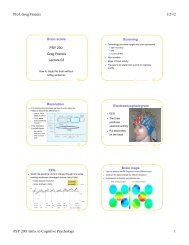

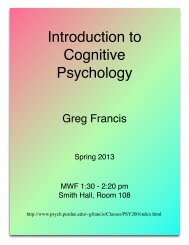
![Exam 4 Study Guide[1]](https://img.yumpu.com/45196739/1/190x245/exam-4-study-guide1.jpg?quality=85)
